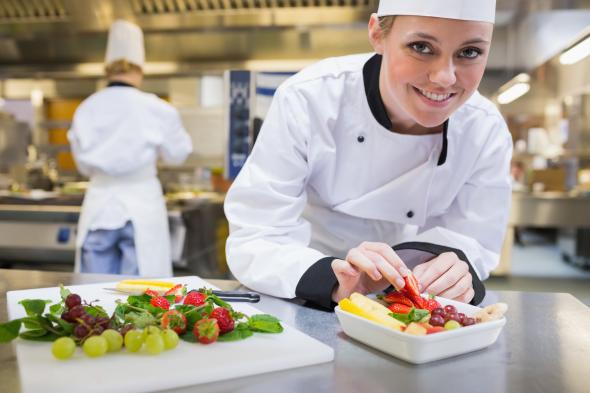In 1946, the New Haven Restaurant Institute opened its doors in downtown New Haven, Connecticut. The school would eventually evolve into the Culinary Institute of America, one of the country’s most prestigious culinary schools, with a main campus in Hyde Park, New York, and satellites in Texas, California, and Singapore. But at the time of its founding, its ambitions were more narrow: to train World War II veterans in the culinary arts. Whether the CIA could be called a patriarchal institution from the start is a bit murky. Unlike the vast majority of sites of higher learning, it was founded by two women, Frances Roth and Katharine Angell. But its first class included 50 students, and 49 of them were men.
The school has come a long way in the intervening 70 years. As of fall 2016, for the first time, more women than men are enrolled at the CIA. Yep, women are now leading the charge at the CIA! (Well, one of the CIAs.) That lone woman in the school’s first class turned into 20 percent women by 1980 and 30 percent by 2000. As recently as 2006, the disparity persisted, with women making up 40 percent of the school’s students. Now, finally, that gap has been closed completely, with 51.6 percent female enrollment.
Why it took so long for the culinary school’s enrollment to catch up to the U.S. population’s gender balance is tied up in the long male-dominated history of the culinary field, one that’s notoriously been a difficult place for women to get ahead. Women have always been expected to cook in the domestic sphere; but Julia Child notwithstanding, outside the home, “gods of food,” as Time magazine once called three cover chefs, tend to be male. Factor that lack of recognition into an industry with punishing hours and a culture that hasn’t always supported raising a family or, in particularly misogynist kitchens, being a woman at all—sexual harrassment is also a common complaint—and it starts to seem a little more clear why we don’t hear more about the goddesses of the food world.
Seventy years isn’t a short amount of time. But next to other fields of study where gender imbalance remains a problem, it starts to look downright speedy. From 2 percent women to 51.6 percent in so few years is impressive by any standard, and worthy of a hearty round of compliments to these chefs. This may be comparing apples and oranges, or more accurately, tarte de pommes and oranges, but if the culinary world can do it, what can computer sciences, engineering, math, and physical sciences learn from its success? A spokeswoman for the CIA offered up one place to start to the Huffington Post, pointing out that the growth of women’s enrollment has coincided with “more and more opportunity for women to have a work-life balance” in food and restaurant jobs. Culinary students are used to complicated recipes, but it turns out the secret to attracting more women might be simple: Give them workplaces that treat them like humans.
